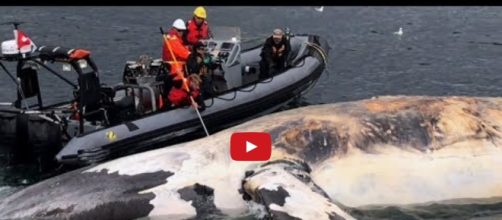The North Atlantic right whale die-off continues with another body washing up on a beach on the west coast of Newfoundland. This brings the total count of right whale deaths in the Gulf of St. Lawrence alone to ten this year. The number of deaths is unprecedented and is causing alarm about the precarious position of the Endangered Species. While government agencies and researchers are trying to determine the cause of death, most of the whales appear to have suffered trauma due to collisions with fishing boats and commercial ships.
Slower ship speeds would save lives
Snow crab fishing in the area has been suspended, but another measure that would make the Gulf of St. Lawrence safer for the right whales is facing resistance from commercial Shipping Companies. The Department of Fisheries and Oceans in Canada has asked ships to slow down as they travel through the waterway. Necropsies on three of the dead whales have shown evidence of trauma due to collision with some kind of vessel.
Shipping boats currently travel at a speed of 20 knots through the Gulf of St. Lawrence. A speed of 10 knots is considered safer by scientists since it gives the whales a chance to see and avoid approaching vessels. They would also stand a better chance of surviving if a collision did take place.
At present, the lower speed is recommended but not mandatory. Shipping companies have not complied and continue to resist making the lower speeds mandatory.
Shipping companies refuse to comply
In a statement, the executive chairman of the Oceanex Shipping Company, Capt. Sid Hynes said that the lower speed would result in enormous financial losses for the shipping industry.
He also raised the specter of disrupted supplies at the grocery store if shipping speeds were reduced. As many as one-third of all right whale deaths are attributed to collisions with shipping boats and entanglement in fishing nets and lines.
While lower shipping speeds will help save lives, researchers are also looking for underlying causes.
There may be health problems, possibly related to a depleted food supply, that makes the whales more susceptible to collisions as compared to the past. Right whales are among the world’s largest animals, growing up to 55 feet in length. They can weigh up to 70 tons. They're also one of the most endangered species and the number of remaining right whales is estimated to be between 468 and 500 worldwide.


